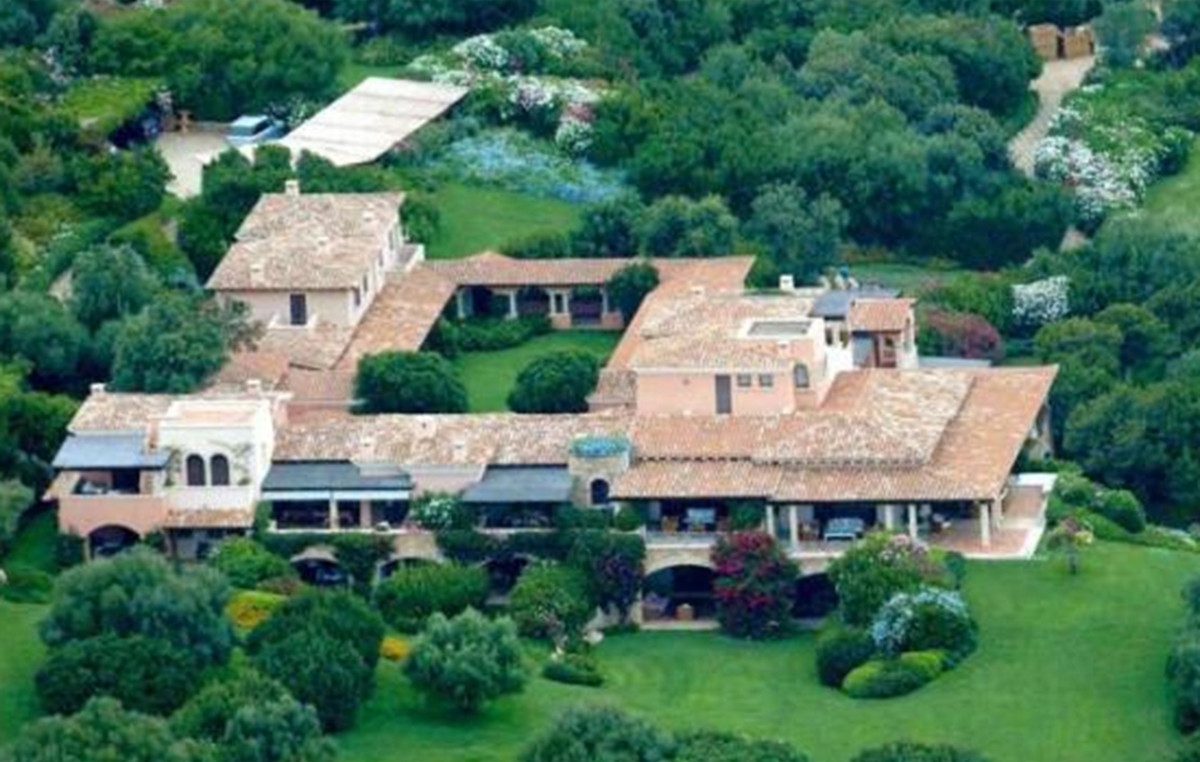A two-story building burned to the ground more than 2,000 years ago in the Pyrenees Mountains in the northeast of Spain’s Iberian Peninsula. The fire consumed the wooden structure, which was located in an Iron Age settlement, killing six animals trapped in the stable.
The fate of the people who used the building is unknown, but details of their lives remain preserved in some burned clues, including pieces of pottery, tools for textile work and a metal pickaxe, recently discovered by archaeologists.
They also found a precious object: a 2-centimeter-long gold earring. The jewel was hidden inside a small jar placed inside a wall, perhaps to keep it safe from alleged looters who set fire to the place, according to a study published on Friday (20). in the journal Frontiers in Environmental Archeology.
The settlement site is called Tossal de Baltarga, and thousands of years ago, a community of Iberian people known as the Cerretani occupied the village. This group predated the Roman occupation of Iberia and left their mark on the region in rock carvings on the mountainsides.
However, researchers are still piecing together clues about the lives of the Cerretani, including the meanings of these carvings, said lead study author Dr. Oriol Olesti Vila, an associate professor at the Autonomous University of Barcelona in Spain.
Scientists have discovered several burned-out buildings at Tossal de Baltarga since 2011, all dating back to the 3rd century B.C. Archaeologists recently excavated a non-residential, multi-purpose structure called Building G, the best-preserved building at the site. It measured about 8 meters long by 2 meters wide, and its contents offer an unprecedented glimpse into Cerretani life in the Iberian Iron Age.
But the blackened ruins also preserve a darker history. The destruction of the entire settlement by fire suggests that the blaze was deliberately set. And the chronology of the fire suggests that its originators may have been an invading army under the command of Hannibal, the Carthaginian general who led troops against the Roman Republic and crossed the Pyrenees around this time, during the Second Punic War (218 B.C. to 201 B.C.), the researchers wrote in the study.
Lifestyle clues
Although the upper floor of Building G collapsed when the supporting beams burned, it still retained traces of its previous structure, with mud bricks on the eastern part of the floor and stone on the western section. One explanation for this is that the upper floor may have been divided into two distinct spaces used for different tasks, the scientists said.
More than 1,000 pottery fragments from the upper floor indicate a variety of vessels, used for cooking, eating, drinking and storage. Eight cooking vessels were nearly complete when found, and chemical analysis revealed that they contained organic residues: animal fats, dairy products and plants.
The design of some of the containers indicated that they were acquired from another Iberian region through trade. More than a dozen weights for a loom and spindles told researchers that the building’s occupants had been spinning and weaving with wool.
In the stable, scientists found the remains of a horse, four sheep and a goat. The horse was kept in a separate stable, and charred particles revealed a variety of local grasses and plants, as well as cultivated grains, stored there as feed for the livestock.
The presence of a horse in the stable suggested these people were wealthier than some of their neighbors, Olesti Vila said.
“In ancient times, horses were not the typical animals that a normal peasant family would have,” as they were expensive to feed and were not kept for their meat or milk, Olesti Vila said. “In general, horses are connected with the elite.”
This discovery provided archaeologists with another important clue about the social structure in the ancient Iberian Peninsula, introducing the possibility of an “aristocratic” class, the study authors wrote.
A “moment in time”
Their discoveries shed light on the Cerretani lifestyle, showing the people’s textile work and use of agriculture and natural resources. Analysis of the hidden gold earring revealed traces of silver mixed with local gold, showing that the Cerretani were also familiar with metallurgy.
Discovering a “moment in time” like this is exceptional for the archaeological record, said Dr. Bettina Arnold, a professor in the department of anthropology at the University of Wisconsin-Milwaukee, who was not involved in the research.
The site provides important insights into the daily lives of Iron Age Iberian populations in the Pyrenees at this pivotal moment in history, Arnold said in an email.
“The most impressive aspect of the excavation of Building G is the breadth of scientific analysis carried out on the finds recovered there, which reveal a community that was self-sufficient in some production activities, such as spinning and weaving wool,” said Arnold.
However, the analysis also showed that this community was part of a large regional network of exchange “through trade and presumably bonds of obligation,” linking them to Iberian tribal leadership, she added.
Deadly attack
The fact that the animals died inside the stable offered researchers another clue about the horrific circumstances of the fire.
During the Iron Age, when people lived in wooden houses heated by fire, the buildings often burned down accidentally. But if that were the case with the fire, animal owners would likely have opened the stable doors to save their livestock, Olesti Vila said.
They would also likely have returned after the fire had gone out to retrieve their hidden treasure—the gold earring they had hidden in a jar.
“This is also an indication of some kind of conflict or some kind of violent aggression,” Olesti Vila said. Scientists suspect the community may have been affected by the Second Punic War and Hannibal’s crossing, because of the timing and context, but because the precise date of the fire is unknown, that connection is only a hypothesis, he said.
Indeed, the existence of violent raids between Iron Age populations in Europe, with bands of invaders fleeing with valuables, livestock and even people, “is well attested archaeologically,” according to Arnold, and is not necessarily associated with a specific historical event like Hannibal’s campaigns.
This content was originally published in Gold earring could help explain fires in Spain centuries ago on the CNN Brasil website.
Source: CNN Brasil
Charles Grill is a tech-savvy writer with over 3 years of experience in the field. He writes on a variety of technology-related topics and has a strong focus on the latest advancements in the industry. He is connected with several online news websites and is currently contributing to a technology-focused platform.







